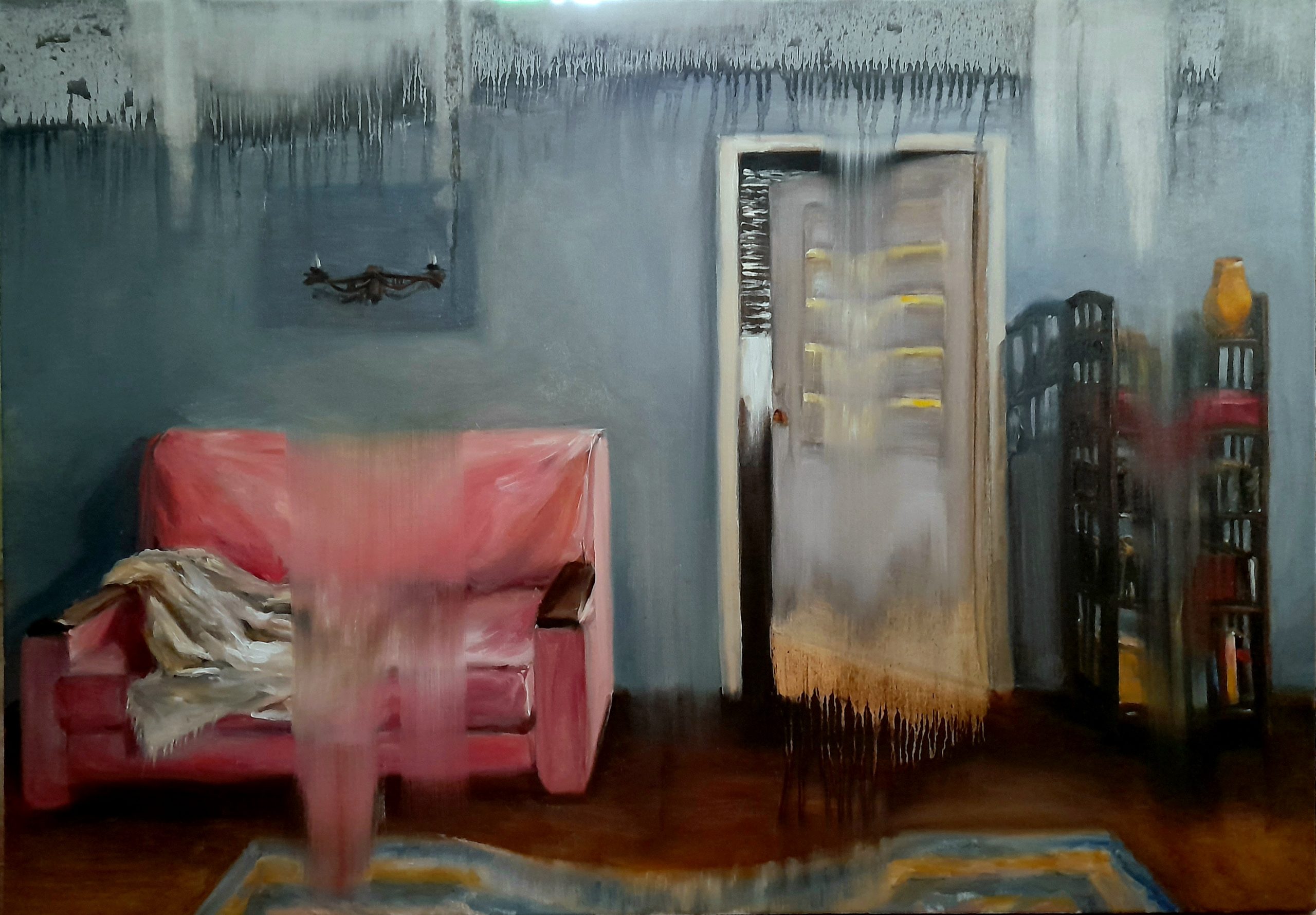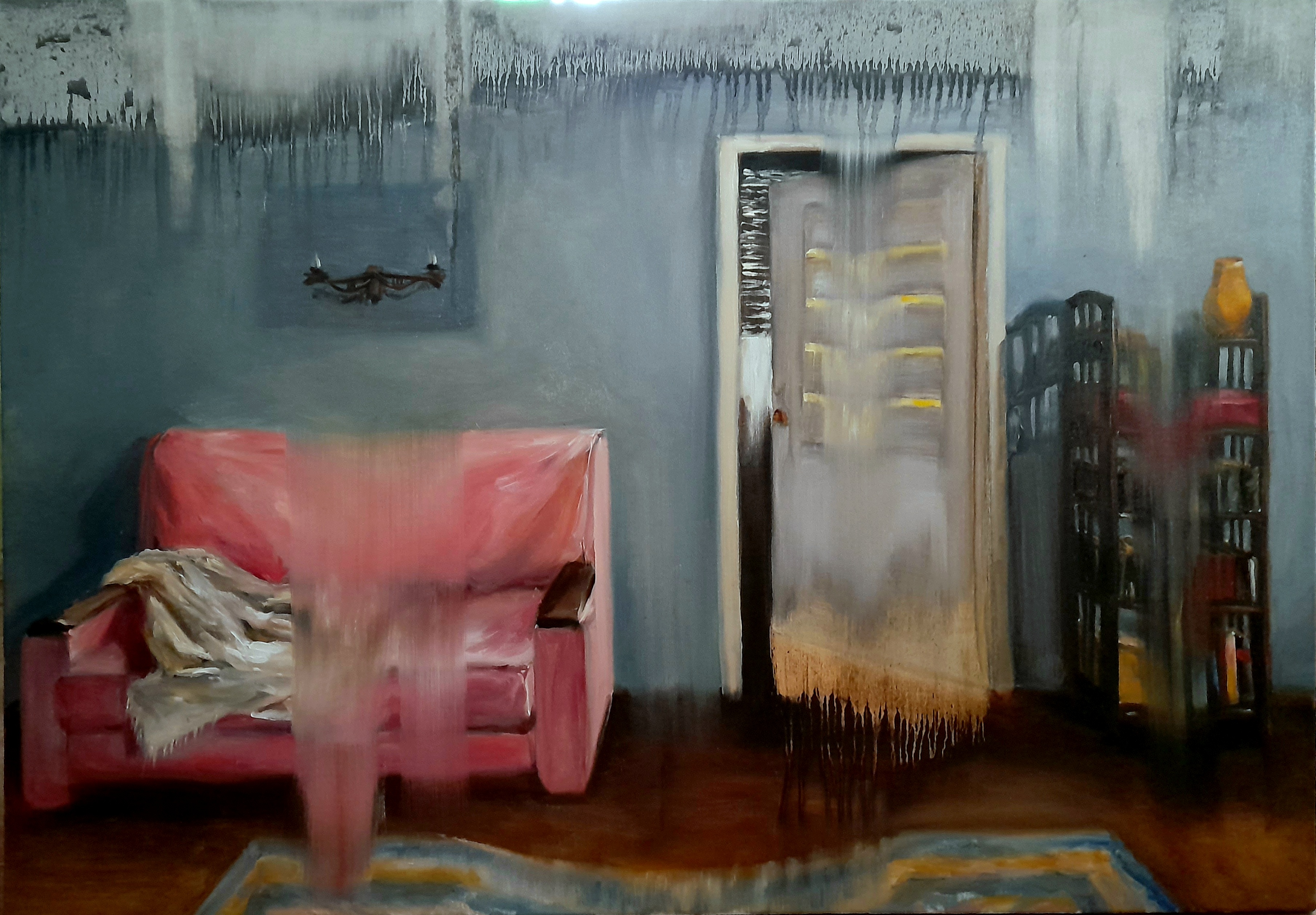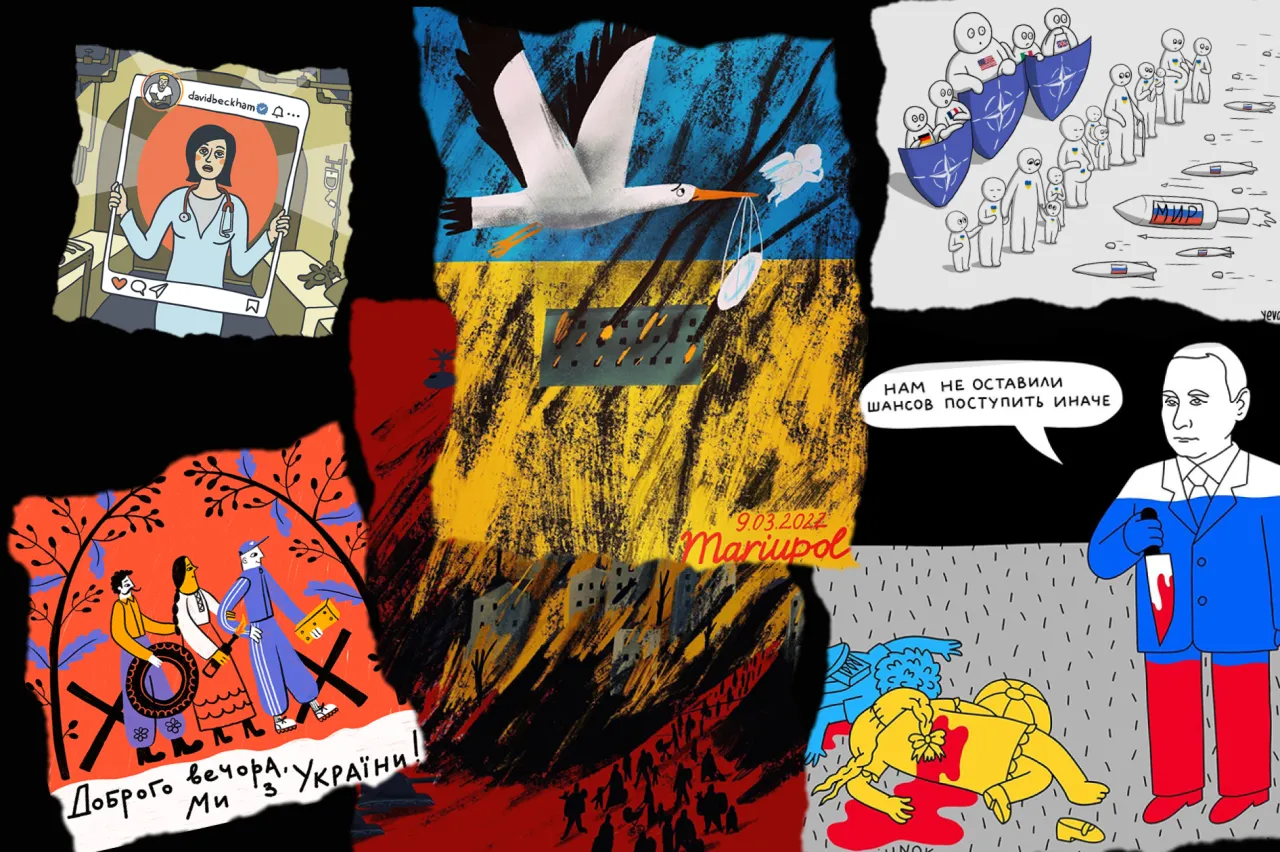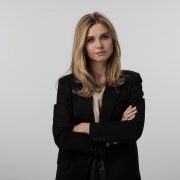Ukrainian Artist Olesya Trofymenko on Collaborating With Dior During The War, Cultural Identity, and Creative “Reanimation”
Where can you find the inner strength for creativity when there’s a war in your country? How do you find vital symbols of optimism at this time and share them globally? Ukrainian artist Olesya Trofimenko knows the answers. Her signature style, embodied in a combination of painting and traditional embroidery, impressed the creative director of Dior, Maria Grazia Chiuri. In July 2022, the fashion house held a couture collection show, for which Olesya created 32 embroidered canvases. In them, she conveyed optimistic and unsettling feelings that define today’s reality.
Olesya Trofimenko is also one of the creators who joined The Revival Project and shared stories about destroyed Ukrainian sites.
We talked to the artist to find out how she turned her hobby into a profession and what she loves about the creative process most. We invite you to get to know the talented Olesya Trofymenko and explore how art helps the world shape its perception of Ukrainians.
On choosing art and creativity as a personal need
As a child, I was obsessed with the piano and asked my parents to send me to a music school. I had a musical memory and an ear for music. But I didn’t expect that it would require such strict discipline. Since I was drawing at the same time, my mother said: “If you go to art school, you can quit music school.” And so it happened.
For me, creativity is a certain philosophy and a way of living. I can’t help but do it, because it’s not just ambition—it is a form of therapy and perhaps a personal need.

Deficiency, 2022
On developing a signature style and having creative doubts
My grandmother was very creative. She was embroidering and sewing things all the time. Since childhood, I remember how she would enthusiastically crochet 3D vases with three-dimensional flowers. Grandma soaked threads in sugar syrup, and they kept their shape. We had these vases, and as a child, I liked to suck the rose petals because they were sweet.
At some point, I asked my grandmother to teach me embroidery. I was doing it as a hobby to relax. Later, I realized that I was spending too much time on it, which resulted in me not painting anything new. Therefore, the decision to combine my hobby and profession turned out to be natural. Moreover, it was an exciting experiment that allegedly succeeded.
I believe that finding a style starts with being inspired by someone’s work and trying to imitate it. But there is no reason to be afraid of this. After all, if you draw the proper conclusions from the work, you gradually come to your own style. It is also crucial to believe in what you are doing and believe in yourself. Although, it’s impossible to believe in yourself at all times. For example, after the Dior fashion show, I got a lot of great feedback, but my first thought was: “What if this is the last good thing I create!?” Such swings occur throughout life, and this is normal.

Deficiency 2: Invasion, 2022
On finding ideas and bringing work to life
Often, I focus on images that pop into my head. This is probably some subconscious experience that comes out at some point. It’s like enlightenment. You have to think and not think at the same time.
I love finishing work. It’s a bit like reanimation: you change something, and suddenly the work comes to life. You then find what else needs to be changed. And after you do so, the work dies. Then it comes to life again and dies again. I adore the stage when you finally reach the point where the work begins to live to the fullest and does not die.
On the feelings of losing your motherland
I was born in the village of Vilcha near the border with Belarus. It is a settlement where Ukrainian and Russian delegations took place for the first time after the invasion. It is the Chornobyl zone. Therefore, I have known how to lose a native place since childhood. When the explosion happened in 1986, my mother and I moved to Kyiv. But the village lived until 1996, and people were still there. First, I came to Vilcha to see my grandmother and later, when she died, to visit my friends. I remember the feeling when you know every tree and every flower. For a long time, I was frustrated because of losing my motherland. But, thank God, I was lucky to find a safe place. I bought a house that is quite far from Kiyv.

Mona, 2015
On the beginning of the invasion and the irresistible desire to live
I was in my cozy village, where nothing happens and mobile internet works poorly. On February 24, I woke up early because I had to go to driving school. On the bus, the internet finally started working, and I read all the news. I saw crowds of people, queues at ATMs, young men getting drafted by phone. I remember a few days before that, I had a conversation about the fact that the war was about to begin. But just as you don’t want to believe in your own death, you don’t want to believe in the beginning of a war. It’s probably impossible to be ready for this.
When the full-scale invasion began, I realized how much I love Kyiv and wanted to return. The first days after the city was liberated, I immediately went there. It was painful to see the traces of a rocket attack near my house, demolished bus stops, sandbags on the tram tracks, and broken windows. Of course, the war changed a lot. At the same time, I was very impressed by the irresistible desire of people to live. In Kyiv, I met a neighbor who told me that her daughter goes to work at a nail salon. I was so surprised that there were customers during this time. It turned out that there were a lot of them, because people were still striving towards life. An ordinary life full of basic everyday needs, beauty, and creativity. This thought made me feel proud of us.

Are you kidding, 2019
On places of strength in Kyiv
I remember how Peizazhna Alley (a popular recreation area in Kyiv) changed over the years. When I lived near the no-longer-existing ‘Kvity Ukrainy’ store, and we used to go to Andriyivskyy Descent, it was not as touristy. I remember all these old houses, the spirit of Old Kyiv, the Richard’s Castle. In my childhood, it was a very romantic image.
When I studied at the Academy of Arts, my friends and I often gathered at Peizazhna Alley to hang out or celebrate birthdays and other significant events. This place is associated with my student years, youth, and fun. But it has changed a lot since then. When I recently returned from Paris, I first went for a walk along Podol and Velyka Zhytomyrska. It was painful to see the old linden near the church and the fountain, but I’m glad everything survived. I love Podil’s courtyards and narrow streets.
On the specifics of working in the movie and fashion industry
I was a little afraid that I might get lost at the Dior show, but when I came to the pavilion and saw the dressing rooms, how everything was built, a bunch of people running here and there, giving and taking commands, it immediately became clear: this is basically the same as filming. Although, there are some differences. If a movie is a collective work stretched in time, in the case of the Dior show, I saw the finale, the result.
Dior Autumn-Winter 2022-2023 Haute Couture Show
On the most challenging and most interesting aspects of collaborating with Dior
The offer to collaborate with Dior came at a time when everyone in Ukraine was horrified by the events in Bucha and Irpin. So, I didn’t take it seriously at first. On one hand, it probably helped me not feel overwhelmed by the scale of the world-famous brand. In light of the news, it was hard to switch in the direction of “aesthetics”, because it completely contrasted with my feelings at the time. The project’s curator Solomia Savchuk told me that the sketches need to be life-asserting and optimistic. My first reaction was quite serious: “Listen, do they know what is happening in Ukraine?”. “Yes, they know, and they believe in our victory,” Solomia replied. The most challenging part was trying to find something that could convey a desire to live and, at the same time, create a feeling of uncertainty about the future. In my opinion, Dior approached this very thoughtfully: the musical sequence, choreography, and tempo allowed conveying this state.
After the show, The Guardian wrote that the Ukrainian artist inspired Dior’s collection. This was a very bold statement. I don’t think I inspired Dior, we just worked together, and they liked the image of the tree of life. It was very nice to meet Maria Grazia Chiuri. We talked for about half an hour, absolutely relaxed and in complete unity of thoughts. Everyone told me: “Finally, you will meet her.” I thought I would feel a bit small next to the fashion queen. But it’s very easy to communicate with her, and this is an indicator of the person’s scale.
What really impressed me was the Chanakya School of Craft (Mumbai), where tapestries were embroidered for Dior. I even joked that every country has its own feminism. The thing is, this is the first school in India where women are allowed to embroider for a living. As the director of Chanakya School told us, things that are natural for women in our country, including embroidery and handwork, are still considered the prerogative of men there.
Посмотреть эту публикацию в Instagram
Source: Dior Instagram account
On the weight of responsibility and criticism
The most important thing is that I received a lot of good feedback from Ukrainians. I was worried about how people would perceive my work. It is a great responsibility to represent Ukraine at such a cultural level. And I really wanted to do everything right.
But there were two complaints. The first one was in regards to why Ukrainians weren’t embroidering tapestries. People need to understand that this is a huge collaboration between a few different countries. Nothing against Ukraine. And the second complaint was about why Maria Grazia’s collection didn’t have elements of traditional Ukrainian clothing. But it wasn’t supposed to. There were signature silhouettes by Maria Grazia, and the influence of the Edwardian style was clear in her works.

Works by Olesya Trofymenko for the Dior Autumn-Winter 2022-2023 Haute Couture Show
Source: Dior website
On the creative front and the power of cultural identity
Of course, art cannot stop the war, but the cultural front is important: thanks to culture, especially folk culture, you become visible to the world. It’s much easier for people to form their ideas about Ukrainians, knowing what is at the basis of our culture. This creates a comprehensive image. For example, we have an idea of the French thanks to the Impressionists, the Louvre, and the Musée d’Orsay.
Cultural identity is crucial, especially now. It is necessary to stop perceiving Ukraine as a part of Russia and to understand that we have a huge layer of culture that was unknown even to ourselves. All because it was banned and oppressed. Now, we’re learning a lot about ourselves. Therefore culture is incredibly important. Visual images are perceived much faster by a person than texts. At the same time, messages supported by visual images become much more powerful.
Discover other interviews with Ukrainian artists:
Lviv-Based Artist Mykhailo Skop on Board Game Design, Medieval Art, and Wartime Posters









